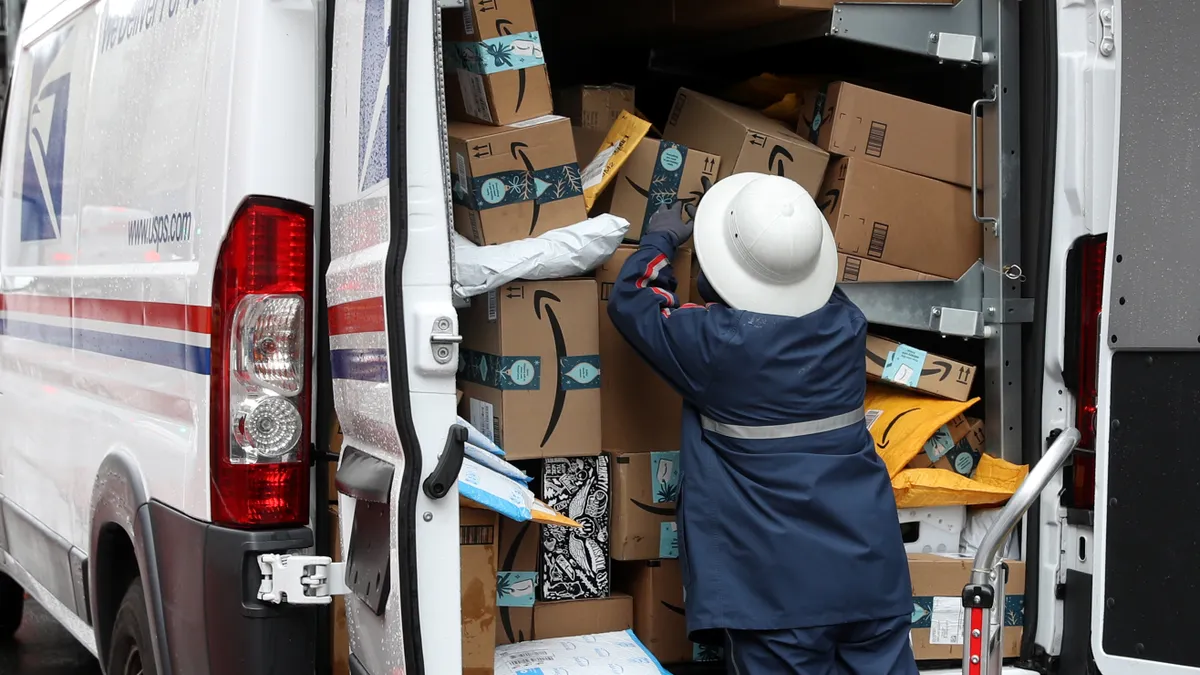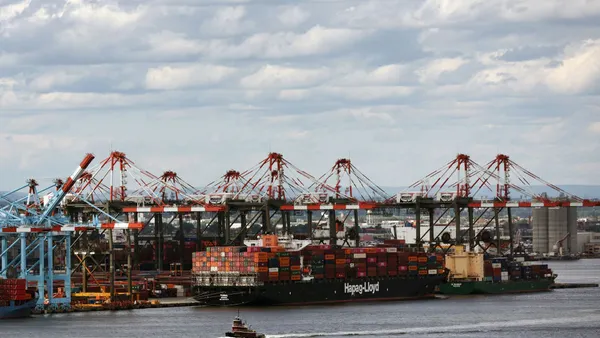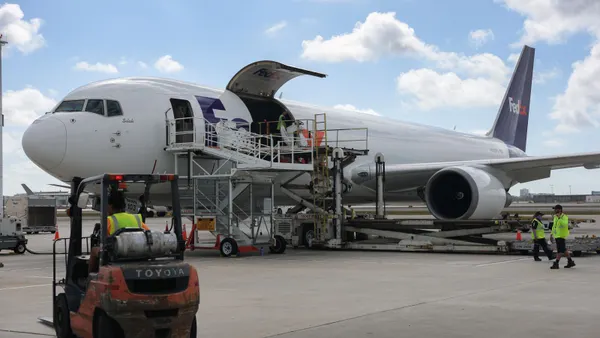Dive Brief:
- As part of its goal to achieve 95% on-time delivery, the Postal Service plans to streamline its middle-mile supply chain by relying more on surface transportation than air cargo for its First-Class Package Service, according to a press release.
- The proposed changes would affect the agency's delivery timeframes. The Postal Service will extend its delivery guarantee for FCPS packages from a 3-day standard to a 5-day standard, although the agency says only a third of the packages it handles will take longer than three days to be delivered.
- Using more surface transportation will allow the the company to shave its end-to-end delivery process down from 11 steps to 5 steps, and is part of the agency's 10-year plan to improve its long-term financial outlook.
Dive Insight:
USPS' latest changes to FCPS underscores one of the agency's top dilemmas: focus on delivering mail or packages?
Last year, during the pandemic its parcel volume grew and Postmaster General Louis DeJoy called for an overhaul of the agency's network to optimize on the growth and improve delivery times. Setting new benchmarks for packages is an effort to do it.
"Customers value and need predictability so they can plan for when to order or ship something," a USPS spokesperson said via email. "By setting attainable standards, we can and will hold ourselves accountable to meet those standards on a consistent, sustained basis which will ultimately help establish meaningful expectations and rebuild trust with the American public."
The surge in volumes is affecting all parcel providers in the U.S. To handle high volume, FedEx is investing in technology updates and building out its fulfillment infrastructure to prepare for this year's peak season. UPS announced higher surcharges for several domestic shipments to ensure service runs smoothly amid increased demand. The surcharges will go in effect next month.
Critics say USPS should focus on improving mail service, not parcel delivery. USPS is the main provider of mail delivery services nationwide, while the parcel delivery market is more competitive. And nearly half of states' attorney generals are urging the U.S. Postal Regulatory Commission to deny the agency's proposed changes, Reuters reported.
But USPS maintains it can remain competitive in parcel delivery despite the changes to service.
"It is expected that FCPS will maintain its competitiveness in lightweight, under one pound, shipping based on the product attributes of price, access, and service," a USPS spokesperson said via email.
The Postal Service has also proposed changes to First-Class Mail, but the changes differ from parcel and reflect the different challenges in shipping standard letters versus small packages.
USPS said continuing to offer a three-day delivery standard for FCPS would force it to rely on air transportation and incur higher costs. Customers who need speedy delivery can still use Priority Mail Express and Priority Mail to ship domestically within 1 to 3 days, according to the agency.
"The Postal Service does not own planes. When we transport mail and packages via air, we are subject to uncontrollable factors such as weather, delays, and space availability on charter flights," according to a USPS fact sheet. "Our surface network has proved more reliable, and our trucks currently have available space for additional packages."
USPS used a "logistics industry optimization software, Blue Yonder Transportation Modeler" to look at various network scenarios and pick a strategy, according to a USPS spokesperson.
Ultimately, the agency chose a model that would cut costs and increase the Postal Service's control over its supply chain, despite the strategy's effects on delivery times. Under the new model, USPS will rely on trucks and central sortation centers, rather than air transport, to route parcels to the entire nation.
Edwin Lopez contributed to this report.















